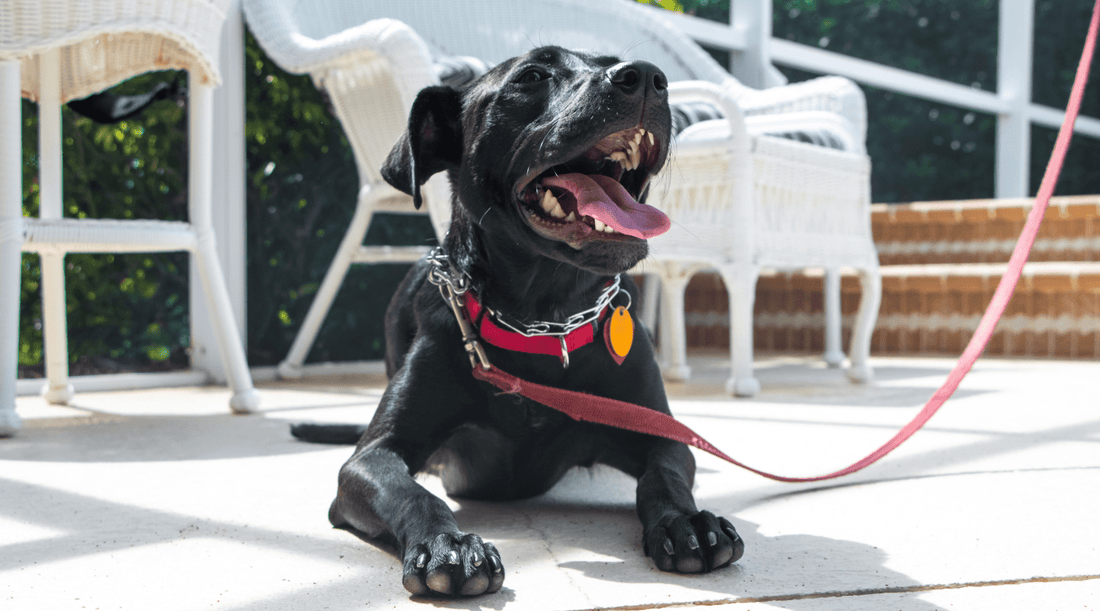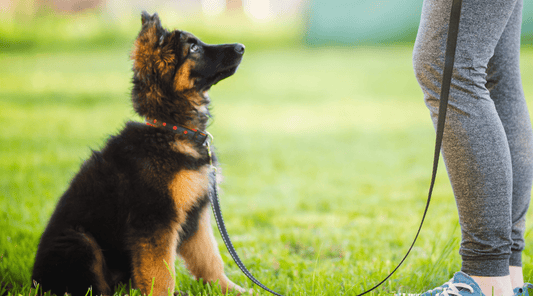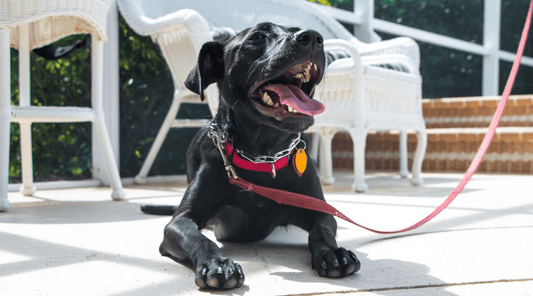Prong Collars for Dogs: Why I Ditched the Spikes for Treats
Dawn Miller May 16, 20254 Minute ReadI’ll be honest—when we first adopted my lab mix Bruno, walks felt more like a tug-of-war than a joyful stroll. My shoulder still remembers that one “skateboarder incident.”
At one point, someone suggested I try a prong collar.
And I get it. On the surface, it sounds like a quick fix. But after doing some research, I realized there was a better way. One that didn’t involve pokey metal or feeling guilty every time I clipped on a leash.
Here’s what I’ve learned—and what’s worked way better for my two pups, Bruno and Pixie.
What Are Prong Collars for Dogs?
Prong collars (also called pinch collars) are metal chains with inward-facing blunted prongs that apply pressure around your dog’s neck when they pull. The idea is that this pressure mimics how a mother dog might correct a pup with her mouth—communicating through brief, targeted pressure. In multi-dog households or during puppy development, dogs often use physical cues to set boundaries. Prong collars are designed to tap into that instinctive communication style.
For some strong, high-drive, or reactive dogs—especially those adopted later in life or with limited training—prong collars can serve as an intermediate tool when other methods have failed. Under the guidance of a professional trainer, they may offer temporary control and help establish safe walking behavior. The goal in these cases is often to use the prong collar as a stepping stone while gradually transitioning to a more positive, reward-based system as the dog learns better leash manners and impulse control.
They’re typically used for dogs that pull hard on leash or show reactive behavior on walks.
But let’s talk about the elephant—or rather, the German Shepherd—in the room…
Do Prong Collars Hurt Dogs?
That depends on who you ask.
Some trainers say you can use them correctly. They’re just a “pressure and release” tool—not painful, just a reminder.
But let’s be real: if something pinched your neck every time you took a step too fast, you’d probably become a nervous wreck!
You might become fearful of walking and the person who put this contraption on you. And I don't think that's the relationship most of us want to have with someone we consider part of the family.
Dogs can’t tell us exactly how they feel. But I’ve seen plenty of body language—from tucked tails to flattened ears—that tells me a prong collar isn’t their favorite accessory.
And when misused? They can cause real harm to your dog’s trachea, neck muscles, and trust in you.
But I hear you saying, my dog won't stop pulling. I can't control them. What do I do?
I have the solution. But first...
Are Prong Collars Cruel?
The term “cruel” is loaded. I'm not here to place that kind of judgment on people who are just trying to safely walk their dogs. Dogs that pull, run, and chase can hurt both themselves and you.
While safety comes before comfort sometimes, the method you use to get there matters too.
But here’s how I think about it: If there’s a gentler way to communicate with my dog that gets the same—or better—results, why not take that route?
I believe every dog deserves a gentle, trust-based training relationship. But I also understand that some people may need to start where they are. If a prong collar helps you regain control and safety while you work on behavior—and you're committed to using it fairly, consistently, and with professional input—it’s not a failure. It’s a first step. Just know that there’s a light at the end of the leash: most dogs can transition to positive-only tools and thrive when rewarded for cooperation, not corrected for mistakes.
Would I rather build obedience through fear or trust? That was my answer right there.
Plus, every time I swapped pressure for praise and beef lung dog treats, my dogs responded faster and with way more enthusiasm.
I used to dread walking Bruno.
What Worked Better for Me
First, try a padded harness with a front leash clip. This is 10X better than a collar. It allows even petite ladies like me to manage a big dog like Bruno. When Bruno would pull forward too fast, the front harness would put him slightly off balance.
No pain. They just can't dash after that car like they wanted to.
The front attachment gives me just enough leverage that I can redirect Bruno by pulling the leash gently to their left or right.
But this is only the first part of my 3-"pronged" strategy. Sorry, I had to.
Next, get some high-value dog treats.
Reward your dog when they stay close to you and walk with you rather than pulling you like a snow sled.
I use K9 Connoisseur’s beef lung bites because they're lightweight, single-ingredient, and apparently better than bacon in Bruno’s opinion.
Every time he walked beside me or checked in instead of lunging, he got a reward. Within a week, our walks went from stressful to… dare I say it… fun.
I love nothing more than to walk with my Bruno...and my distractible terrier, Pixie.
It worked for her too!
I also give the dogs a beef marrow dog bone 2-3 times a week. Gnawing on bones is mentally stimulating. So, it can help even distractible, anxious, and reactive dogs calm down.
Finally, teach your dog useful dog training commands. Dog experts believe that dogs can learn around 120 distinct human phrases. You can use these to communicate what you want with your dog.
Dogs thrive on routines. The world is a less confusing place when you share a language with your dog.
Here are 7 dog commands that make my dog walks so pleasant these days.
- "Stay" to stop unwanted lunging
- "Leave it" if they want to chase something or are about to pick something up they shouldn't
- "Drop it" if they try to gobble something up before you have a chance to stop them.
- "Let's go!" when it's time to start walking.
- "Heel" if you like your dog to walk beside you slack leash.
- "Come" when it's time to reattach the leash at home, a dog park, or anywhere. Once they know this skill, you can take them off-leashing for hikes and lake trips, where that's permitted. Off-leashing is so freeing to a dog and their pup parent.
- "Gentle" if they get a little rough with a child or other dog that walks up to you
And of course, I use positive reward training to teach them each of these commands. We began with "sit". And then started building on that skill week after week. I choose high-value treats to make training faster and easier.
To learn more about the power of positive reinforcement with treats, be sure to check out the 7-Day Dog Training Challenge.
Prong Collar Training Tips (If You’re Already Using One)
If it's working for you, and your dog doesn't seem scared or hurt, then great. I just want to share how to use a prong collar safely:
- Work with a professional trainer when possible to learn how to use the right amount of force.
- You can learn a lot from YouTube videos too!
- Make sure the collar fits snug but not tight
- Never jerk the leash or “pop” corrections
- Always pair it with praise and rewards
And I don't know....maybe start working on transitioning to a positive-only method as soon as you can. Okay, I’ll admit a little bias here—but that’s only because I’ve seen what a difference positive methods made in my life and in Bruno’s.
Available On:
Disclosure: This article may contain affiliate links, which means we may earn a small commission if you make a purchase through these links—at no extra cost to you. We only recommend products we trust and believe will benefit you and your K9.






